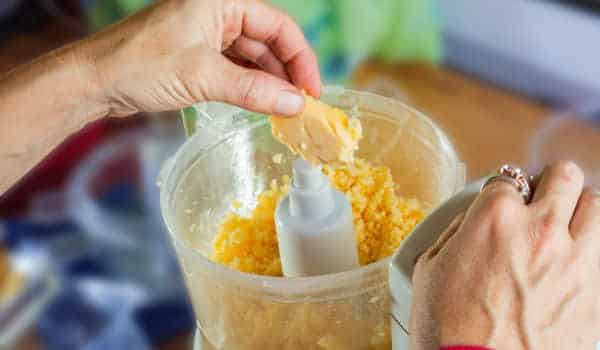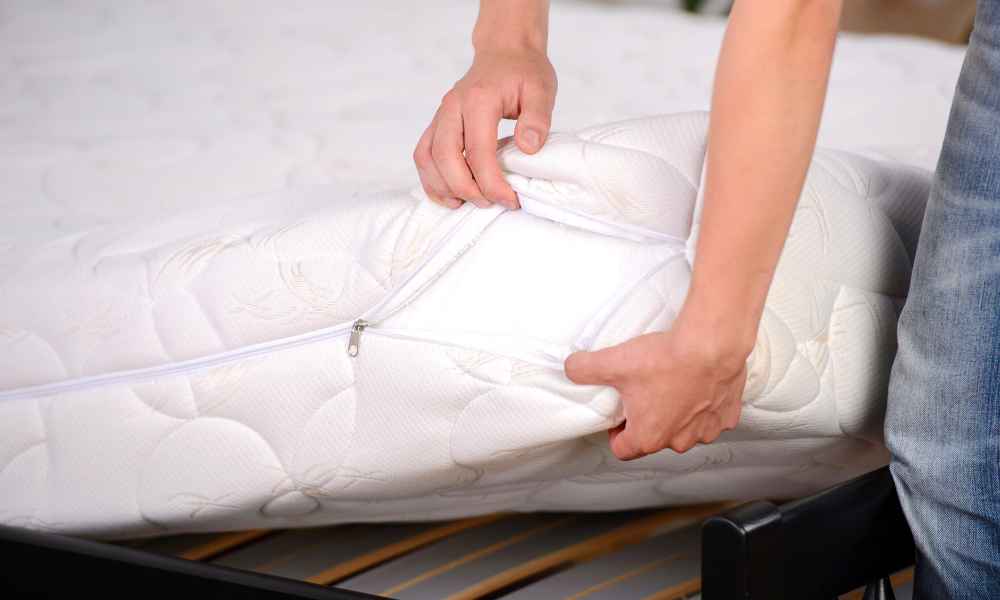Cheese stands as a fundamental ingredient across global cuisines, offering rich flavors and diverse textures to an array of dishes. Traditionally, the process of grate cheese involves the use of a dedicated grater, a common kitchen tool. However, circumstances may arise where access to such equipment is limited or unavailable.
Hence, this guide aims to explore inventive alternatives for cheese grating, providing practical and resourceful methods that don’t rely on a conventional grater. By delving into these innovative approaches, individuals can still enjoy the convenience of grated cheese in their culinary creations, even without traditional tools.
Using a Knife

Explanation of finely chopping cheese with a sharp knife
Explaining the process of finely chopping cheese with a sharp knife involves cutting the cheese block into smaller, manageable pieces. Then, these pieces are carefully sliced or diced into tiny fragments resembling grated cheese.
The key lies in maintaining a consistent pressure and angle while cutting to achieve the desired texture. This method requires patience and precision to ensure uniformity in the chopped cheese.
Safety precautions and techniques for chopping cheese without a grater
When using a knife for cheese chopping, observing safety precautions is paramount. It’s crucial to use a sharp knife and a stable cutting surface to avoid slippage.
Keeping fingers away from the blade and using a claw-like grip on the cheese while cutting can prevent accidental cuts. Additionally, being mindful of hand placement and employing a steady cutting motion enhances safety during this process.
Advantages and limitations of this method
The method of chopping cheese with a knife presents both advantages and limitations. On the positive side, it offers control over the cheese’s texture and allows customization according to personal preferences.
However, it demands skill and patience, and the resulting texture might not precisely mimic the uniformity of grated cheese from a grater. Furthermore, there’s a potential risk of uneven cuts or accidental injury if proper precautions aren’t followed diligently.
Utilizing a Food Processor or Blender

Description of using a food processor or blender for cheese grating
Utilizing a food processor or blender for cheese grating involves employing the machine’s sharp blades to achieve a grated-like consistency. These appliances are designed to pulverize and break down ingredients, including cheese, into smaller particles.
They offer a convenient alternative to traditional graters by swiftly and efficiently processing cheese into a grated or shredded texture.
Steps involved in the process of grating cheese with this equipment
The process of grating cheese with a food processor or blender typically begins by cutting the cheese into manageable chunks. These chunks are then placed into the appliance and pulsed or processed in short bursts until reaching the desired consistency.
Controlling the processing time helps achieve varying textures, from fine to coarse grated cheese.
Tips for efficient and proper grating using a food processor or blender
To ensure efficient and proper grating using a food processor or blender, certain tips can enhance the process. Firstly, it’s advisable to use cold cheese, as it tends to grate more effectively without clumping. Additionally, ensuring that the appliance is clean and dry before use prevents moisture from affecting the cheese’s texture.
Cutting the cheese into smaller chunks aids in even processing, and pulsing the machine instead of continuous blending allows for better control over the resulting texture. Lastly, monitoring the cheese closely during processing prevents over-grating, resulting in a paste-like consistency rather than grated cheese.
Freezing and Shredding

Explanation of how freezing cheese makes it easier to shred
Freezing cheese alters its structure, making it more brittle and firm, which facilitates easier shredding. When cheese is frozen, the moisture within it solidifies, causing it to harden.
This change in texture allows the cheese to hold its shape better when grated or shredded, resulting in finer and more uniform pieces compared to room temperature cheese, which might tend to stick or clump together.
Steps to freeze and shred cheese without a grater
The process of freezing and shredding cheese without a grater involves several steps. Begin by wrapping the cheese tightly in plastic wrap or placing it in a sealed freezer bag, ensuring there’s no excess air inside. Then, place the cheese in the freezer and allow it to freeze until firm, typically for a few hours or overnight.
Once adequately frozen, remove the cheese from the freezer and use a sharp knife to carefully shave or cut it into thin slices or small chunks. Then, proceed to manually shred the frozen cheese using a fork or employ a food processor with a chopping blade to achieve the desired grated texture.
Advantages and limitations of this technique
This technique offers certain advantages, such as ease of handling and better control over the shredding process. The frozen cheese tends to maintain its structure, making it simpler to create uniform shreds without the need for a grater.
However, there are limitations to consider. Firstly, frozen cheese might lose some of its original texture and moisture, potentially altering its taste slightly. Additionally, the process of freezing and thawing cheese can be time-consuming, requiring advance preparation to ensure the cheese is adequately frozen before shredding.
Using a Fork or Mandoline

Guide on using a fork to create grated cheese by hand
Using a Fork to Create Grated Cheese by Hand involves a manual method that requires a block of cheese and a sturdy fork. Start by holding the cheese block firmly and rubbing it against the tines of the fork in an up-and-down or back-and-forth motion. Apply consistent pressure to generate grated cheese-like particles.
Continue this process until the desired amount of cheese is grated. It’s essential to take breaks intermittently, especially if grating a larger quantity, to avoid hand fatigue.
Explanation of using a mandoline slicer for cheese grating
Explanation of Using a Mandoline Slicer for Cheese Grating: A mandoline slicer, equipped with adjustable blades, offers a convenient way to grate cheese. Set the mandoline’s blade to the desired thickness for grating and secure the cheese block onto the slicer’s guard.
Carefully slide the cheese back and forth over the blade to generate uniformly grated cheese. Exercise caution while handling the mandoline slicer to prevent accidental cuts as the blades are extremely sharp.
Precautions and tips for safe usage of these tools
Precautions and Tips for Safe Usage of these Tools: When using a fork for grating, it’s essential to watch your fingers’ proximity to the tines to avoid accidental injuries. Choosing a fork with sturdy tines can also prevent bending or breakage during the grating process. For the mandoline slicer, wearing a cut-resistant glove can provide an extra layer of protection while handling the sharp blades.
Additionally, always use the mandoline on a stable surface and ensure the handguard is properly attached to prevent slippage or direct contact with the blade. Cleaning these tools immediately after use and storing them safely away from children’s reach are crucial safety
Read More: How Are Skillets Measured
Practical Applications and Recommendations
Suggestions for recipes using grated cheese from alternative methods
- Pasta Dishes: Incorporate grated cheese from alternative methods into pasta recipes such as spaghetti carbonara, macaroni and cheese, or baked ziti.
- Salads and Appetizers: Use grated cheese to enhance salads like Caesar salad or in appetizers like stuffed mushrooms or cheese-stuffed jalapeños.
- Soups and Casseroles: Sprinkle grated cheese onto soups like French onion soup or use it in casseroles such as cheesy broccoli rice casserole or lasagna.
Tips for efficient cheese grating without a grater
- Opt for the right tools: Use the method that best suits your comfort and the desired cheese texture.
- Prep ahead: Ensure the cheese is at the right temperature or consistency for the chosen method.
- Practice safety: Implement safety measures when using knives or slicers for grating.
- Experiment and adapt: Try different techniques to find what works best for you and adapt based on the cheese type and recipe.
Advantages and Disadvantages of Alternative Grating Techniques
When evaluating alternative cheese grating techniques, each method presents distinct advantages and limitations. The knife method offers control but demands skill and time; food processors or blenders provide efficiency but may alter texture; freezing facilitates easier handling but alters taste and moisture; while the fork or mandoline methods offer manual control but might lead to hand fatigue or require specific tools.
Factors such as cheese type, quantity needed, skill level, taste preferences, and safety considerations should guide the choice of the most suitable grating method for an individual’s specific culinary needs and available resources.
Conclusion
Exploring alternative cheese grating methods without a traditional grater reveals a range of inventive techniques. From using knives, food processors, freezing, to employing forks or mandolines, these approaches offer diverse options for achieving grated cheese textures in culinary endeavors.
These methods not only showcase versatility but also underscore the importance of adaptability and innovation within the kitchen. They enable individuals to overcome tool limitations, fostering creativity while ensuring the continuation of culinary excellence through improvisation and resourceful techniques.
Ultimately, embracing these alternatives emphasizes the dynamic nature of cooking and encourages continuous exploration and innovation in culinary practices.




